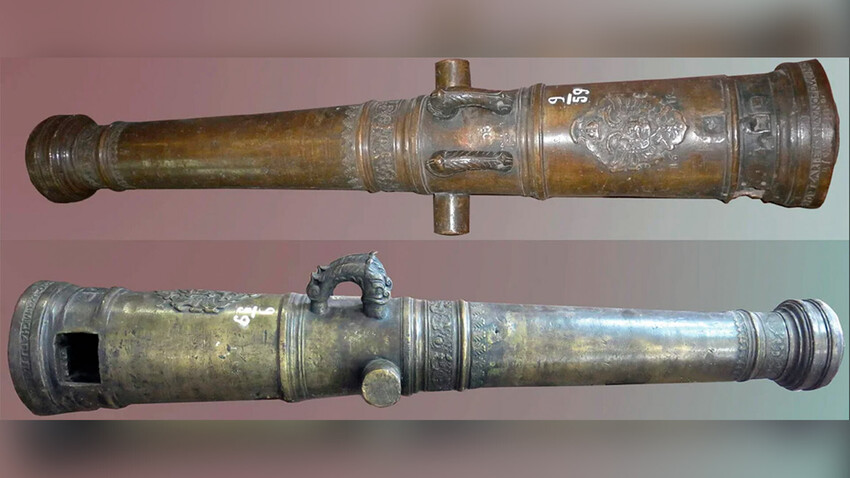
This cannon emerged from the storage of the old St. Petersburg Arsenal in the late 1850s, when it was discovered by historian Florentiy Pavlenkov. Dating to the early 17th century, the cannon is 156 centimeters, 316 kilograms, barrel diameter – 69 millimeters. The barrel is rifled, loaded from the breech (rear). This find was astonishing – at that time all cannons were still smoothbore and loaded through the muzzle. But even more surprising were the words cast on the cannon.
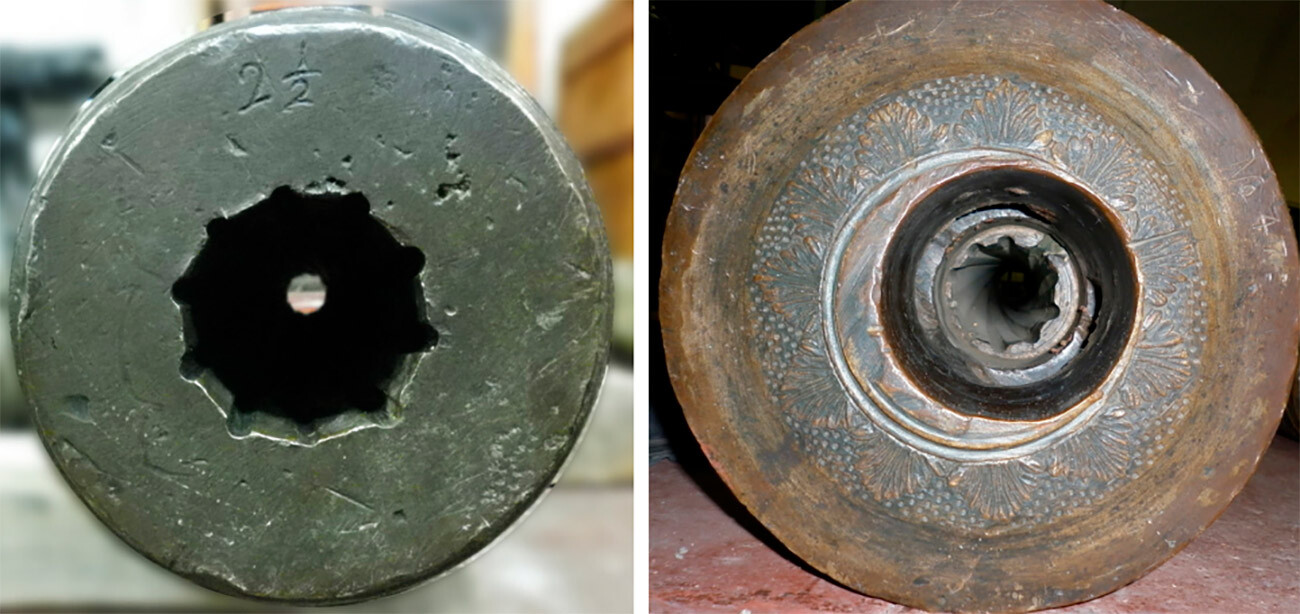
Rear view of the cannon, the rifling of the barrel is obvious
Military Historical Museum of Artillery, Engineers and Signal CorpsThe year of casting, 1615, is indicated on the breech. Also present is the coat of arms of the Moscow state – a double-headed eagle with a shield on its chest. Around the barrel is an inscription in Latin: "Magno Domini Tzari et Magno Duchi Michaeli Foedrowits Omnium Ursorum" – "To the Great Tsar and Great Leader of All Bears Mikhail Fedorovich."
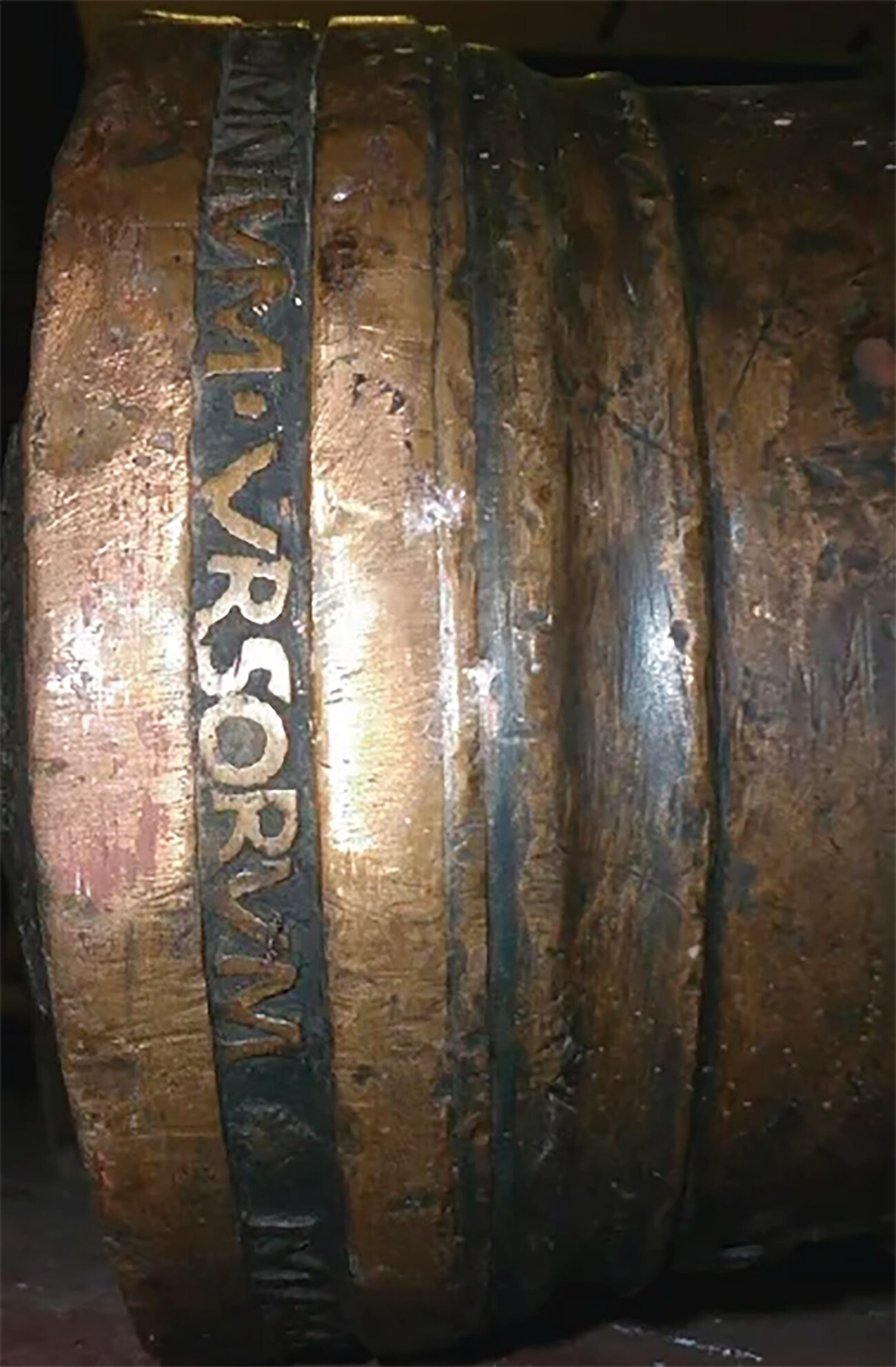
The famous typo in Latin
Military Historical Museum of Artillery, Engineers and Signal CorpsOf course, the inscription about "the leader of all bears" is the result of an error of the gun's creators. The inscription should have ended with the words "Omnium Russorum" – "All of Russia". But someone mixed up the letters, and "Russorum" turned into "Ursorum"; "urs" is Latin for "bear". Florentius Pavlenkov suggested that it was the Russian master who made the mistake "because of his low literacy and poor knowledge of the Latin language".
In this case, Pavlenkov wrote, "it may very well be that the casting of this gun belongs to us [Russians], and then the honor of the initiative in the invention of gun rifling will be our full and undivided property.”
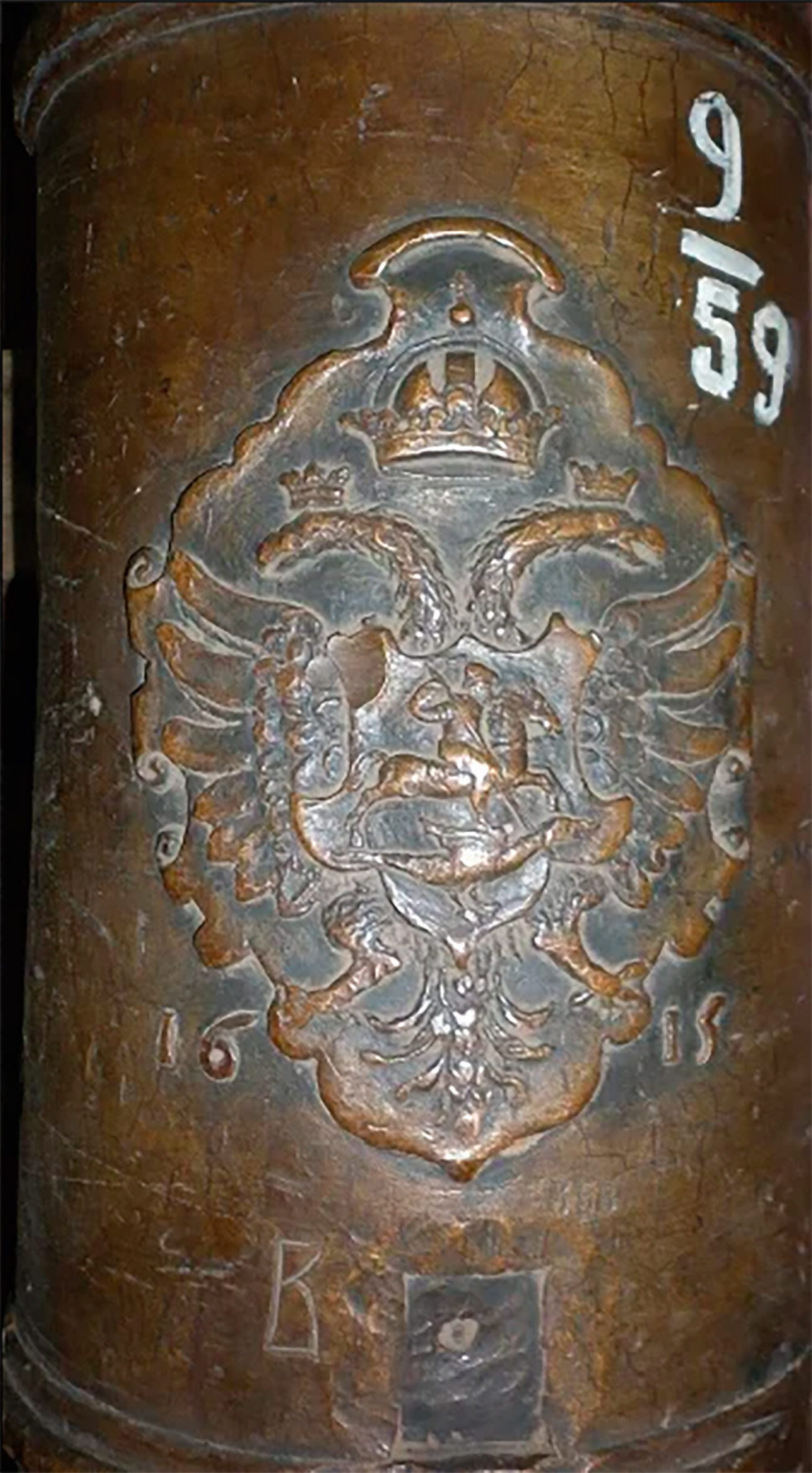
The coat of arms of the Russian State cast on the side of the barrel
Military Historical Museum of Artillery, Engineers and Signal CorpsRifled cannons appeared in Europe only at the end of the 17th century, and Russia began to make its own rifled guns only in Pavlenkov's time – in the second half of the 19th century. The cannon’s first researchers, Pavlenkov and Nikolai Brandenburg, assumed that it was Russian made, and until the 1950s it was exhibited in the Peter and Paul Fortress in St. Petersburg as the world's first rifled cannon that had been made in Russia. In 1900, the gun was even taken to the World Exhibition in Paris: "This cannon is the oldest of all known rifled cannons loaded from the breech," – such was written in the exhibition catalog.
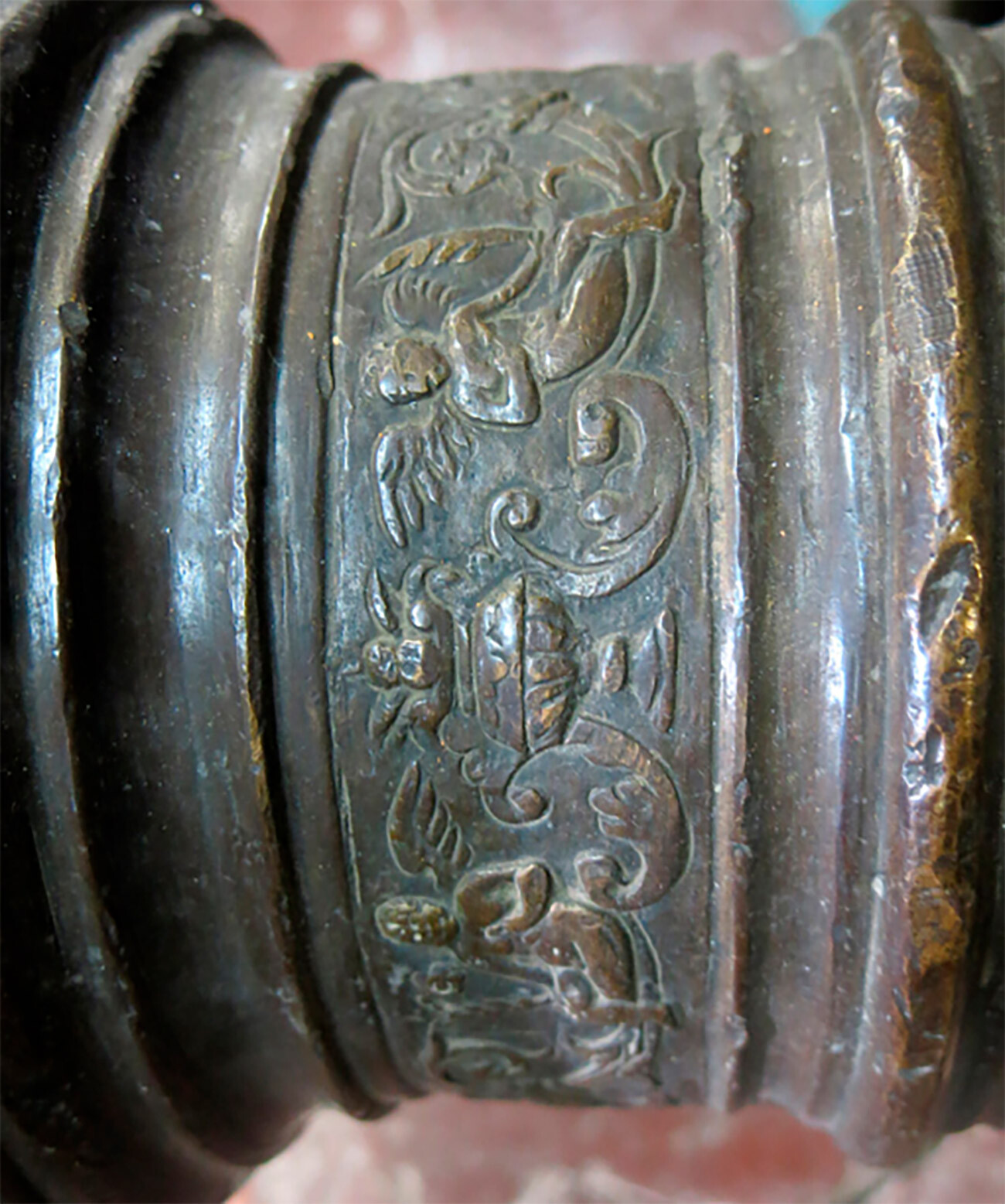
The art casting of the barrel
Military Historical Museum of Artillery, Engineers and Signal CorpsIn the 1950s, Soviet historians began to doubt the cannon’s authenticity, and so it was removed from public exhibition in the Peter and Paul Fortress until its origins were further clarified – "it can be publicly displayed only if it’s definitely Russian", said historian Vladimir Galkin, reporting the opinion of the museum workers.
Only in the 2010s was the cannon thoroughly studied by the famous artillery historian Alexei Lobin. He discovered a new source – the gun was mentioned in the "Dvinsky List of 1702", which is a list of fortifications and guns in the city of Arkhangelsk and nearby fortresses, as a "copper regimental gun, German casting". It didn’t specify that the barrel was loaded from the breech and had rifling.
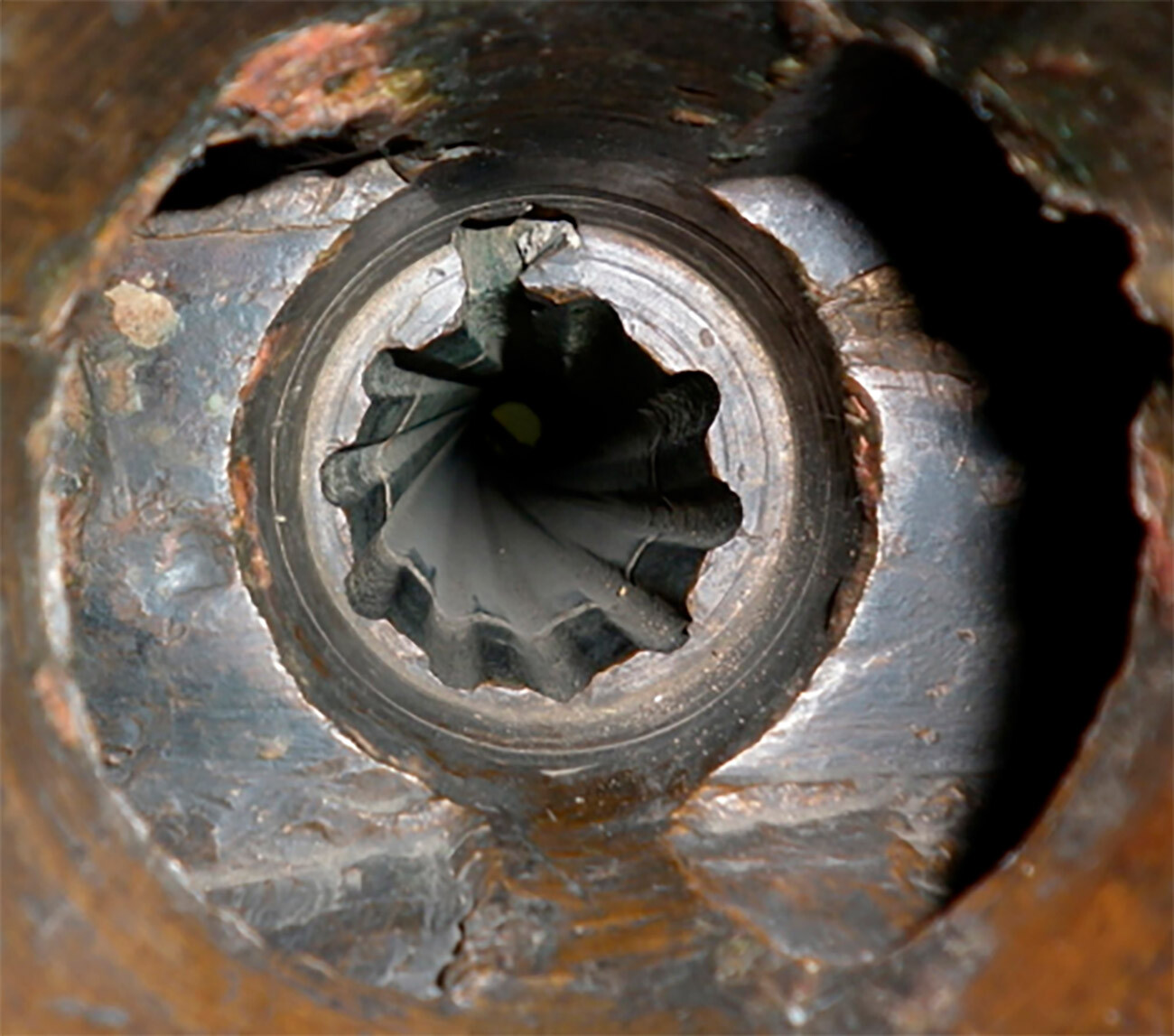
Another shot of the rifled barrel
Military Historical Museum of Artillery, Engineers and Signal CorpsThe study of the cannon, as Vladimir Galkin rightly notes, is still incomplete. However, historians now assume the following. The gun is most likely not of Russian production. The Latin inscription in the dative case shows that the cannon could have been made in Europe as a gift to Mikhail Fedorovich – this is also indicated by the Dvinskiy List's mentioning that the gun was "of German casting".
When accepting it as a gift, the Russian court may or may not have noticed the funny typo – but the cannon was probably too valuable a gift not to accept even if they did notice.
The same source ("Dvinsky List") suggests that the cannon originally did not have rifling in the barrel of the cannon or a breech loading mechanism. These were added later in the 18th century. So far, however, these are only assumptions that have yet to be confirmed or refuted.
If using any of Russia Beyond's content, partly or in full, always provide an active hyperlink to the original material.
Subscribe
to our newsletter!
Get the week's best stories straight to your inbox